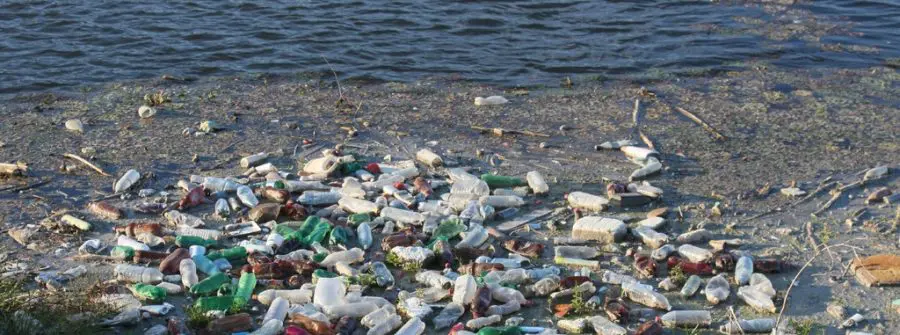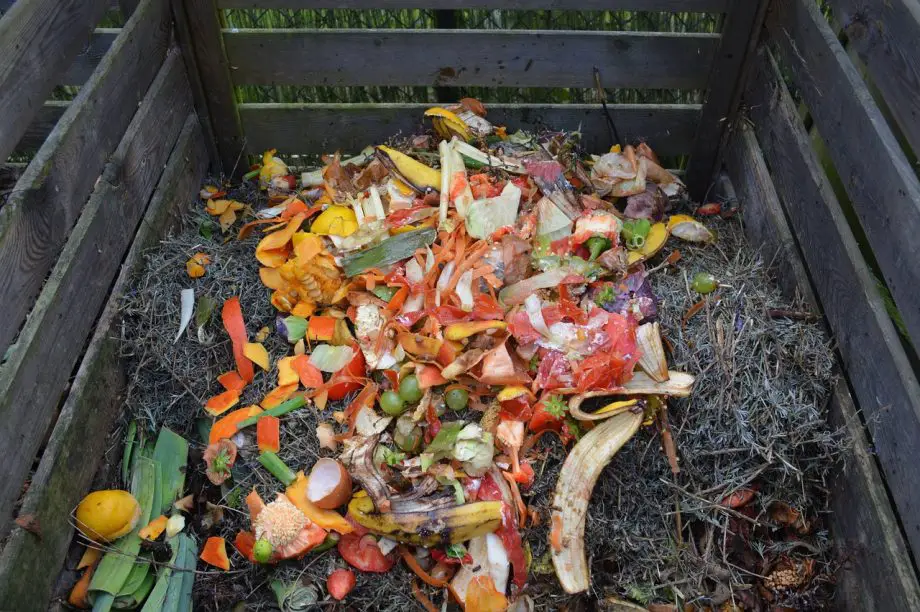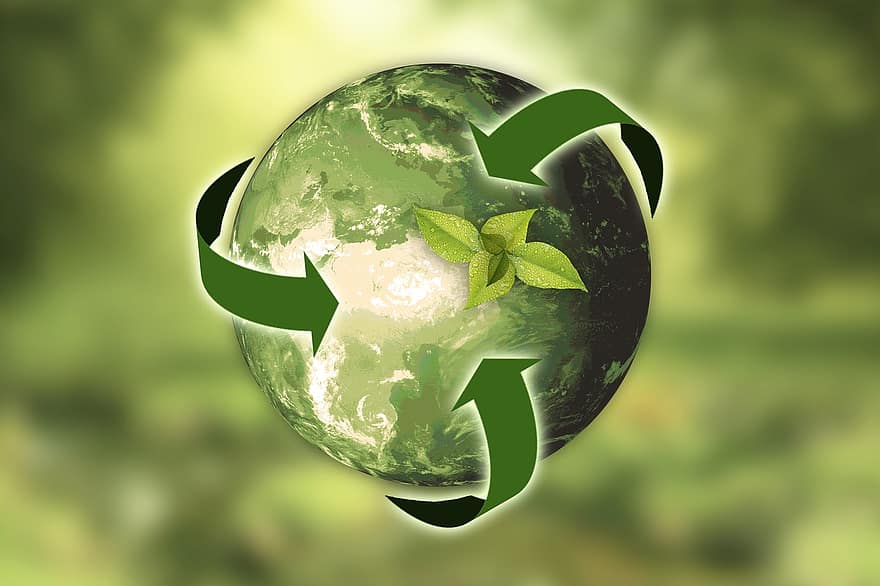
Discover easy and effective sustainable living practices for apartment dwellers. Make your home eco-friendly without sacrificing comfort or style.
Living in an apartment doesn’t mean you can’t embrace sustainable living practices.
In fact, apartment dwellers have a unique opportunity to redefine green living in compact spaces.
From energy efficiency to waste reduction, let’s dive into the world of sustainable living practices for apartment dwellers and see how small changes can make a big difference.
Sustainable Living Practices for Apartment Dwellers
Welcome to the journey of transforming your apartment into a green haven.
As we explore sustainable living practices for apartment dwellers, we’ll touch on a variety of topics from rethinking transportation to volunteering for environmental programs.
Whether you’re a seasoned eco-warrior or just starting out, this guide will offer practical tips and insights to help you make your apartment living more sustainable.
Let’s get started and see how these small yet impactful steps can contribute to a healthier planet.
Definition of Sustainable Living
Sustainable living, you’ve probably heard the term, but what does it really mean?
Well, in simple terms, it’s all about reducing our impact on the environment and leading a lifestyle that supports and sustains the earth’s natural resources for future generations.
It’s about making conscious choices in our daily lives, from the food we eat to the products we buy, and even the way we travel.
It’s not about perfection, but about making better choices when we can.
Importance of Sustainable Living for Apartment Dwellers
Now, you might be thinking, I live in an apartment, how much of an impact can I really make? The answer is, a lot!
Sustainable living practices for apartment dwellers are not only possible, but they’re also incredibly important.
Apartments, by their very nature, are more energy-efficient than larger homes, but there’s always room for improvement.
By adopting sustainable practices, we can reduce our carbon footprint, save money, and even create a healthier living space.
Plus, it’s a great way to contribute to the larger global effort of protecting our planet.
So, whether it’s switching to energy-efficient light bulbs or starting a mini compost bin on your balcony, every little bit helps.
Let’s explore how we can make our apartments a beacon of sustainability.
Rethinking Transportation
Let’s hit the road but in a greener way! Rethinking transportation is a key step in our journey toward sustainable living.
As apartment dwellers, we often live in bustling urban areas with various transportation options at our fingertips.
This gives us a unique opportunity to make eco-friendly choices that not only benefit the environment but also our health and wallets.
So, buckle up as we explore the benefits of biking, walking, carpooling, and even choosing fuel-efficient cars. It’s time to shift gears and drive toward a more sustainable future.
Benefits of Biking, Walking, and Carpooling
Let’s start with the basics like biking, walking, and carpooling. These are not just modes of transportation, but also ways to contribute to a healthier planet.
Biking and walking, for instance, are not only great for your physical health, but they also have zero carbon emissions.
Imagine getting your daily dose of exercise while also doing your part for the environment, it’s a win-win!
Carpooling, on the other hand, is a fantastic option when distances are long or when public transportation isn’t available.
By sharing rides, we can significantly reduce carbon emissions and traffic congestion.
Plus, it’s a great way to save on fuel costs and make new friends!
Choosing Fuel-Efficient Cars
Now, we understand that biking, walking, or carpooling might not always be feasible.
That’s where fuel-efficient cars come in. These cars are designed to get more miles out of each gallon of fuel, meaning they emit less carbon dioxide compared to their gas-guzzling counterparts.
If a charging station is located nearby you might even consider a hybrid or an EV.
Choosing a fuel-efficient car doesn’t mean you have to compromise on style or performance.
Many modern cars combine efficiency with all the features you love. So, next time you’re in the market for a car, consider fuel efficiency as a key factor in your decision.
It’s a choice that your future self, and the planet, will thank you for.
Starting a Garden
Ready to get your hands a little dirty? Starting a garden is one of the most rewarding sustainable living practices for apartment dwellers.
You might be thinking, But I live in an apartment, where would I even start a garden?
Well, you’d be surprised at how much you can grow in small spaces! From windowsill herb gardens to balcony vegetable patches, there are plenty of ways to cultivate your green thumb.
So, let’s roll up our sleeves and dig into the benefits of growing your own food and the joy of community gardens.
It’s time to plant the seeds of sustainability right in our own homes.
If you are short on space or new to gardening I recommend the AeroGarden. It is easy to use and basically foolproof. It has a built-in LED light and with its small footprint, it can be put just about anywhere. Here is a video of me growing basil in mine.
Benefits of Growing Your Own Food
Growing your own food can be a game-changer. For starters, it’s a fantastic way to reduce your carbon footprint.
When you grow your own food, you eliminate the need for transportation and packaging that comes with store-bought produce.
Plus, you can control what goes into your soil, ensuring your veggies are free from harmful pesticides and chemicals.
But the benefits don’t stop there. Tending to your plants can be a great stress reliever and a fun hobby.
And let’s not forget the unbeatable taste of home-grown produce.
There’s something incredibly satisfying about eating a meal made from ingredients you’ve grown yourself.
It’s fresh, it’s nutritious, and it’s sustainable.
Community Gardens
Now, if space is really a constraint, community gardens are a wonderful alternative.
These shared spaces provide a plot for you to grow your own plants, allowing you to reap the benefits of gardening even if you don’t have a balcony or a patio.
Community gardens are more than just a place to grow food. They’re a place to grow relationships.
They foster a sense of community, allowing you to connect with your neighbors and learn from each other.
Plus, they often run workshops and events to help you become a better gardener.
So, you’re not just growing plants, you’re also growing as a person and as a community. Now, that’s what we call a fruitful endeavor!
Creating an Energy-Efficient Home
Let’s turn our attention to the heart of sustainable living practices for apartment dwellers, creating an energy-efficient home.
It’s not just about saving on your utility bills, though that’s a great perk.
It’s about reducing your carbon footprint and making your living space more comfortable and eco-friendly.
From weather-stripping doors to using energy-saving light bulbs, there are numerous ways to make your apartment more energy-efficient.
So, let’s embark on this journey of transforming our apartments into green, energy-saving havens.
It’s time to power up our sustainability game!
Weather-Stripping Doors, Stopping Drafts, Replacing Air Filters
Let’s start with some simple yet effective measures.
Weather-stripping doors and windows is a great way to prevent drafts and keep your apartment cozy without overworking your heating system.
It’s a small investment that can make a big difference in your energy consumption.
Speaking of drafts, make sure to check for any gaps or cracks around your windows and doors.
These can let in cold air during the winter and hot air during the summer, making your heating and cooling systems work harder.
A little caulk or sealant can go a long way in stopping those drafts.
And don’t forget about your air filters! Regularly replacing the filters in your heating and cooling systems can improve their efficiency and air quality in your apartment.
It’s a small task that can have a big impact on your energy use and your health.
Using Solar Panels and Energy-Saving Light Bulbs
Now, let’s talk about lighting. Switching to energy-saving light bulbs is one of the easiest ways to make your apartment more energy-efficient.
These bulbs use less energy and last longer than traditional bulbs, making them a win for both your wallet and the environment.
If you want to take it a step further, consider solar panels. While this might seem like a big step, there are now solar panels designed specifically for apartments and small spaces.
They can be installed on balconies or windows and can generate enough energy to power your lights and small appliances.
It’s a more substantial investment, but it’s one that pays off in the long run, both financially and environmentally.
Supporting Renewable Energy
Next on our journey of sustainable living practices for apartment dwellers is supporting renewable energy.
You might be wondering, How can I, as an apartment dweller, support renewable energy? Well, there are more ways than you might think!
From installing solar systems to investing in green energy companies, we can all play a part in the transition towards cleaner, more sustainable energy sources.
So, let’s dive in and explore how we can power our homes, and our lives, with renewable energy.
It’s time to harness the power of the sun, the wind, and the water for a brighter, greener future.
Installing Solar Systems
Solar power is one of the most accessible forms of renewable energy for apartment dwellers.
While you might not have a roof to install a full solar panel system, there are still plenty of options.
For instance, solar window chargers can be used to power your devices or solar-powered lights can brighten up your balcony or patio.
If your apartment building has a shared roof, you might even consider talking to your landlord or property manager about the possibility of installing a shared solar system.
Not only can solar power reduce your electricity bill, but it also reduces your carbon footprint. It’s a shining example of sustainable living!
Investing in Green Energy Companies
Supporting renewable energy isn’t just about what you can do in your own home. It’s also about where you put your money.
By investing in green energy companies, you’re helping to fund the development and expansion of renewable energy technologies.
These companies are working on innovative solutions to our energy needs, from wind turbines to hydroelectric power to advanced solar technology.
By investing in these companies, you’re voting with your dollars for a cleaner, greener future.
It’s a way to make your money work for the planet, even while you sleep!
Reducing Single-Use Items
Let’s move on to a topic that’s close to all of our hearts – reducing single-use items.
We’ve all seen the devastating impact of single-use plastics on our oceans and wildlife. But did you know that as apartment dwellers, we can play a significant role in reducing the demand for these items?
From grocery shopping to takeaway meals, there are countless opportunities to choose reusable over disposable.
So, let’s delve into the impact of single-use items on our environment and explore some practical, easy-to-implement alternatives.
It’s time to say goodbye to single-use and hello to sustainability!
Impact of Single-Use Items on the Environment

Single-use items, particularly plastics, have a significant impact on our environment.
These items are used once and then discarded, ending up in landfills, oceans, and even our food chain.
They take hundreds of years to decompose, during which time they release harmful chemicals into the soil and water.
Not to mention, the production of these items requires a lot of energy and resources, contributing to carbon emissions and climate change.
Alternatives to Single-Use Items
The good news is, there are plenty of alternatives to single-use items that are better for the environment and often better for your wallet too.
For instance, a reusable shopping bag can replace hundreds of plastic bags over its lifetime.
Similarly, a reusable water bottle or coffee cup can save countless single-use bottles and cups from ending up in landfills.
In the kitchen, consider swapping plastic wrap for beeswax wraps or silicone lids.
And when it comes to takeaway meals, why not bring your own containers? Many restaurants are more than happy to accommodate.
Remember, every time you choose reusable over disposable, you’re making a difference.
It’s these small changes, made by all of us, that can add up to a big impact on our planet.
Reducing Meat Consumption
Now, let’s talk about something that’s close to our hearts and our stomachs, our diet.
Reducing meat consumption is a powerful way for apartment dwellers to embrace sustainable living practices.
It might surprise you, but the food we eat has a significant impact on our planet, and making a shift toward a more plant-based diet can make a big difference.
So, let’s delve into the environmental impact of animal agriculture and explore the benefits of reducing our meat intake.
Whether you’re ready to go full vegetarian or just want to have a few meat-free days a week, every little bit helps. Let’s dig in!
Environmental Impact of Animal Agriculture
Animal agriculture has a significant impact on our environment. It’s a major contributor to greenhouse gas emissions, more so than all the cars, planes, and trains in the world combined.
It’s also a leading cause of deforestation, as land is cleared to make way for grazing animals or to grow crops to feed them.
Additionally, it uses a tremendous amount of water – it takes thousands of gallons of water to produce just one pound of beef.
Benefits of Reducing Meat Intake
Reducing meat intake has numerous benefits, both for the planet and for our health.
On the environmental front, less demand for meat means less deforestation, less water usage, and lower greenhouse gas emissions.
On the health front, a diet rich in fruits, vegetables, and whole grains has been linked to a lower risk of heart disease, diabetes, and certain types of cancer.
Plus, there are now so many delicious plant-based alternatives available, you won’t feel like you’re missing out.
Remember, reducing meat consumption doesn’t have to be all or nothing.
Even small changes, like having a meat-free day once a week, can make a big difference.
It’s about making choices that are better for the planet and better for our health.
So, why not give it a try? Your body and the planet will thank you.
Buying Less
Next up on our sustainable living journey is a concept that might seem a bit counterintuitive in our consumer-driven society, buying less.
Yes, you read that right. One of the most impactful ways we can live more sustainably is by simply consuming less.
This doesn’t mean depriving ourselves of the things we need or love. Instead, it’s about making mindful choices, valuing quality over quantity, and finding joy in the things we already have.
So, let’s delve into the impact of our consumer culture on the environment and discover the benefits of buying less. It’s time to embrace a less-is-more approach to life.
Impact of Consumer Culture on the Environment
Our consumer culture, driven by the constant desire for more and newer things, has a significant impact on the environment.
Every product we buy has a carbon footprint, from the resources used to make it, to the energy consumed in manufacturing and transportation, to the waste generated when it’s discarded.
Furthermore, the fast fashion industry, electronics, and even the food industry contribute to a cycle of continuous production and consumption that is unsustainable in the long run.
This cycle not only depletes the earth’s resources but also contributes to pollution and climate change.
Benefits of Buying Less
On the flip side, buying less has numerous benefits. For starters, it reduces the demand for new products, which in turn reduces the strain on our planet’s resources.
It also means less clutter in our homes and less waste ending up in landfills.
But the benefits of buying less aren’t just environmental. They’re also personal.
Buying less often means valuing quality over quantity, which can lead to longer-lasting, better-made products.
It can save us money, reduce stress, and even lead to greater happiness. After all, the best things in life aren’t things.
So, next time you’re tempted to make a purchase, take a moment to consider whether you really need it, whether it will add value to your life, and what the environmental cost might be.
It’s a small step that can make a big difference.
Ditching Plastic Bags
Now, let’s tackle a common item that has become a symbol of waste worldwide, plastic bags.
These seemingly harmless items have a much larger environmental impact than many of us realize.
But the good news is, ditching plastic bags is one of the easiest and most effective sustainable living practices for apartment dwellers.
So, let’s delve into the environmental impact of plastic bags and explore some practical, eco-friendly alternatives.
It’s time to bag the bag and embrace a more sustainable way of carrying our groceries, our lunch, and everything in between.
Environmental Impact of Plastic Bags
Plastic bags have become a ubiquitous part of our lives, but their convenience comes at a high environmental cost.
They are made from non-renewable resources, require energy to produce, and emit greenhouse gases.
Once discarded, they take hundreds of years to decompose, during which time they can harm wildlife and clog waterways.
Even when they do break down, they don’t biodegrade but instead turn into microplastics, tiny particles that can contaminate soil and water and enter the food chain.
Alternatives to Plastic Bags
The good news is, there are many alternatives to plastic bags that are better for the environment.
Reusable shopping bags are a popular choice. They are durable, can carry more weight than plastic bags, and can be used hundreds of times.
Some stores even offer discounts for customers who bring their own bags.
For produce, consider using reusable mesh bags instead of the plastic ones provided in the store.
And for your lunch or other small items, consider using a reusable tote or even a backpack.
Remember, every time you choose a reusable bag over a plastic one, you’re helping to reduce the demand for plastic, decrease pollution, and protect wildlife.
It’s a small change with a big impact. So, next time you head out the door, don’t forget to grab your reusable bags!
Changing to Paperless Billing
Let’s turn our attention to a simple switch that can make a big difference, changing to paperless billing.
In our digital age, there’s no need to receive paper bills in the mail.
Not only does paperless billing reduce clutter in your apartment, but it also saves trees and reduces carbon emissions associated with paper production and delivery.
So, let’s delve into the benefits of paperless billing and guide you through the process of making the switch.
It’s time to say goodbye to the paper pile and hello to a cleaner, greener way of managing our bills.
Benefits of Paperless Billing
Switching to paperless billing has several benefits. For starters, it’s good for the environment.
By reducing the need for paper, you’re helping to save trees, conserve water, and reduce greenhouse gas emissions associated with paper production and transportation.
But the benefits don’t stop there. Paperless billing also helps to reduce clutter in your home, making it easier to keep track of your bills and payments.
Plus, it’s often more convenient. You can access your bills anytime, anywhere, and you don’t have to worry about losing a paper bill or missing a payment.
How to Switch to Paperless Billing
Switching to paperless billing is usually a straightforward process. Most utility companies, banks, and service providers offer the option to go paperless. Here’s a general guide on how to do it:
Log into your account on the company’s website or app.
Look for an option that says Paperless Billing, E-Bill, or something similar. This is often found in the account settings or billing preferences.
Follow the prompts to switch to paperless billing. You may need to provide an email address where your bills will be sent.
Confirm the change. You might receive an email asking you to confirm the switch to paperless billing.
Remember, every company’s process might be a little different, so don’t hesitate to reach out to customer service if you need help.
And once you’ve made the switch, make sure to check your email regularly to keep track of your bills and avoid late payments.
Owning a Reusable Water Bottle
Next on our sustainable living journey is a simple change with a big impact and that’s owning a reusable water bottle.
In a world where millions of plastic bottles are used every minute, choosing to refill rather than buy new is a powerful act.
Not only does it save money and reduce plastic waste, but it also encourages us to stay hydrated, a win-win situation!
So, let’s dive into the environmental impact of commercial water bottles and explore the benefits of owning a reusable one.
It’s time to fill up on sustainability and good health!
Environmental Impact of Commercial Water Bottles
Commercial water bottles have a significant environmental impact. They are made from petroleum, a non-renewable resource, and their production requires a lot of energy and emits greenhouse gases.
Once used, they often end up in landfills or the ocean, where they can take hundreds of years to decompose.
Even when recycled, they can only be downcycled into lower-quality plastic, which will eventually end up as waste.
Furthermore, transporting bottled water from its source to the store uses energy and emits carbon dioxide, contributing to climate change.
And let’s not forget about the water itself. In many cases, it’s simply tap water that’s been packaged and sold at a premium.
Benefits of Owning a Reusable Water Bottle
On the other hand, owning a reusable water bottle has numerous benefits.
It reduces the demand for single-use plastic bottles, helping to reduce plastic waste and conserve resources.
It also saves you money in the long run as refilling a water bottle is much cheaper than constantly buying new ones.
But the benefits aren’t just environmental and financial. A reusable water bottle is also more convenient.
You can fill it up at home, at work, or at public water fountains, ensuring you always have water on hand.
Plus, many reusable bottles are insulated, keeping your water cold for longer.
So, if you don’t already have one, consider investing in a reusable water bottle.
It’s a small change that can make a big difference for the planet and your wallet.
Volunteering for Environmental Programs
As we continue exploring sustainable living practices for apartment dwellers, let’s consider a way to make a difference beyond our homes and that is volunteering for environmental programs.
Giving our time and energy to support the environment is a powerful way to contribute to a more sustainable future.
Whether it’s cleaning up a local park, planting trees, or educating others about sustainability, there are countless ways to get involved.
So, let’s delve into the importance of volunteering and explore some of the types of environmental programs you might consider.
It’s time to roll up our sleeves and make a difference in our communities!
Importance of Volunteering
Volunteering is a powerful way to make a difference in your community and the world at large.
It allows us to give back, to contribute to causes we care about, and to make a tangible impact.
When it comes to the environment, volunteering can help to protect and restore natural habitats, promote sustainable practices, and educate others about the importance of environmental stewardship.
Moreover, volunteering isn’t just beneficial for the environment. It’s also beneficial for you.
It can provide a sense of purpose, help you develop new skills, and offer opportunities to meet like-minded people.
Plus, spending time in nature has been shown to boost mental health and wellbeing.
Types of Environmental Programs to Volunteer For
There are countless environmental programs out there looking for volunteers. Here are a few types you might consider:
Conservation projects: These could involve planting trees, cleaning up beaches, or restoring wildlife habitats.
Organizations like the Nature Conservancy often have local chapters that organize volunteer events.
Community gardens: These projects not only green up urban spaces but also provide fresh, local produce.
They’re a great way to learn about gardening and meet your neighbors.
Education and outreach: If you’re passionate about spreading the word about sustainability, consider volunteering for an organization that focuses on education and outreach.
This could involve giving talks, leading workshops, or organizing events.
Citizen science projects: These projects involve collecting data to support scientific research.
For example, you might monitor local bird populations or track the health of a nearby stream.
Remember, the best volunteer opportunity is one that aligns with your interests and skills.
So, take some time to explore what’s out there and find a program that’s a good fit for you.
Every bit of help counts in the fight for a more sustainable future.
Sustainable Living Practices for Apartments FAQs
As we navigate our sustainable living journey, it’s natural to have questions. That’s why we’ve included this FAQ section to address some of the most common queries about sustainable living practices for apartment dwellers.
From how to live sustainably in an apartment to examples of sustainable living, we’ve got you covered.
So, let’s dive into these questions and shed some light on the path to a greener lifestyle.
It’s time to quench your curiosity and empower your sustainable living journey!
Q: How can I live sustainably in my apartment?
A: Living sustainably in an apartment involves making mindful choices about how you use resources.
This can include reducing energy consumption by using energy-efficient appliances and light bulbs, reducing water usage with low-flow showerheads, and minimizing waste by recycling and composting.
You can also choose sustainable transportation options, grow your own herbs or vegetables if possible, and buy less to reduce your environmental impact.
Q: What are 3 examples of living sustainably or being sustainable?
A: Reducing Energy Consumption: This can be achieved by using energy-efficient appliances, turning off lights when not in use, and choosing renewable energy sources where possible.
Minimizing Waste: This involves recycling and composting, using reusable shopping bags and water bottles, and choosing products with minimal packaging.
Sustainable Eating: This includes reducing meat consumption, buying local and organic food, and minimizing food waste.
Q: How can apartment buildings be sustainable?
A: Apartment buildings can be sustainable in several ways. They can incorporate energy-efficient design features, such as good insulation, energy-efficient lighting, appliances, and solar panels.
They can also provide facilities for recycling and composting, install water-saving fixtures, and use sustainable materials in construction and maintenance.
Additionally, they can encourage sustainable practices among residents, such as providing bike storage or shared garden spaces.
Q: What are two examples of sustainable living?
A: Choosing Public Transportation or Biking: Instead of driving, choosing public transportation, biking, or walking can significantly reduce your carbon footprint.
Buying Less and Choosing Second-Hand: By buying less and choosing second-hand items when possible, you can reduce the demand for new products and the resources needed to produce them.
Sustainable Living Practices for Apartment Dwellers – Final Thoughts
As we wrap up our exploration of sustainable living practices for apartment dwellers, it’s time to reflect on what we’ve learned and look ahead to how we can apply these practices in our daily lives.
Sustainability isn’t just about big gestures or drastic lifestyle changes.
It’s about the small, everyday choices we make from how we commute to work, to what we buy, to how we dispose of our waste.
Each of these choices adds up, contributing to a healthier planet and a more sustainable future.
So, let’s recap the importance of sustainable living and encourage each other to continue on this green journey.
It’s time to embrace our role as stewards of the planet, one sustainable choice at a time.
Recapping the Importance of Sustainable Living
Sustainable living is more than just a trend or a buzzword. It’s a necessary response to the environmental challenges we face today.
From climate change to resource depletion, our actions have a significant impact on the planet.
By adopting sustainable living practices, we can help to mitigate these impacts.
Living sustainably in an apartment involves making mindful decisions about how we use resources.
It’s about reducing our energy and water consumption, minimizing waste, choosing sustainable transportation options, and making conscious choices about what we buy and consume.
Each of these actions contributes to a healthier planet and a more sustainable future.
Encouragement for Readers to Adopt Sustainable Practices
As we conclude, I encourage you to take these sustainable living practices to heart and incorporate them into your daily life.
Remember, every small change makes a difference.
Whether it’s switching to a reusable water bottle, composting your food waste, or choosing to bike instead of drive, each action contributes to a larger collective impact.
Living sustainably doesn’t mean you have to do everything at once.
Start with one or two changes, and once those become habits, add a few more.
It’s a journey, not a destination. And remember, you’re not alone in this journey.
We’re all learning and growing together, and every step we take toward sustainability is a step toward a healthier planet and a brighter future.
So, let’s continue to learn, grow, and make sustainable choices together.










